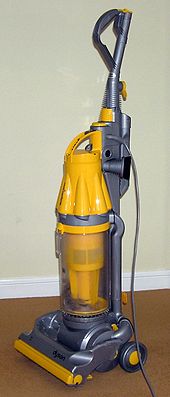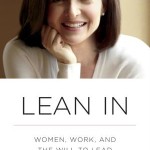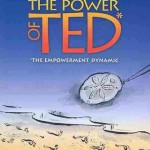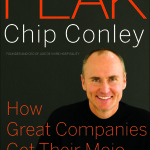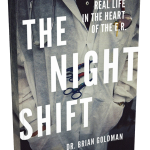“The key to success is failure… Success is made of 99 percent failure.”
Sir James Dyson, CBE (born 2 May 1947) is a British inventor, industrial designer and founder of the Dyson company. He is best known as the inventor of the Dual Cyclone bagless vacuum cleaner, which works on the principle of cyclonic separation. According to the Sunday Times Rich List 2013, his net worth in 2013 was £3 billion. [From: Wikipedia.com]
James Dyson was born in England, one of three children. His father, Alec, died when he was nine. “Not having a father, particularly at that time, was very unusual. I felt different. I was on my own. I can’t quite explain it, but I think subconsciously I felt a need to prove myself… I’m certainly quite driven.”
At school he excelled in long distance running:“I was quite good at it, not because I was physically good, but because I had more determination. I learned determination from it.”
His first boss, Jeremy Fry, put him in charge of a company manufacturing a high-speed landing craft. At that stage in his career he had never designed a product and never sold anything. “He taught me that someone doesn’t have to grow into a job. If you allow them to make mistakes, they’ll learn extremely quickly. He also taught me to mistrust experience. He was far happier to have young people working around him who had freshness and an unsullied approach.”
Dyson famously went through 5,127 prototypes of his Dual Cyclone bag-less vacuum cleaner before settling on the model that would make him a billionaire. His company now also makes blade-less fans and energy-efficient hand dryers, and operates in 49 countries. “Air movement within a cyclone is highly complex. So you must make one change at a time and test it, and only by following that methodical process can you determine the best design. You produce tables of results, and then graphs from which you observe trends. It’s the failures that you learn from.”
In the late 1970s Dyson had the idea of using cyclonic separation to create a vacuum cleaner that would not lose suction as it picked up dirt. He became frustrated with his Hoover Junior’s diminishing performance: dust kept clogging the bag and so it lost suction.
While partly supported by his art teacher wife’s salary, and after five years and many prototypes, Dyson launched the ‘G-Force’ cleaner in 1983. However, no manufacturer or distributor would launch his product in the UK as it would disturb the valuable cleaner-bag market, so Dyson launched it in Japan through catalogue sales. Manufactured in bright pink, the G-Force had a selling price of £2,000 (British equivalent). He obtained his first U.S. patent on the idea in 1986 and it won the 1991 International Design Fair prize in Japan.
“We have an extraordinary number of testing regimes, mechanical and human. We have laboratories where we breed dust mites; we have a full-size house to vacuum. We test product to break them, to wear them out. If you drop something from an enormous height and it breaks, when you look at where it’s broken, you can often figure out how to stop it breaking, not by making it out of heavier, more expensive material but by making some tiny, clever structural design change.”
After failing to sell his invention to the major manufacturers, Dyson set up his own manufacturing company. “I just felt that if I gave it up and did something sensible, I’d always regret it.” The product now outsells those of some of the companies that rejected his idea and has become one of the most popular brands in the United Kingdom. In early 2005 it was reported that Dyson cleaners had become the market leaders in the United States by value (though not by number of units sold).
Dyson’s breakthrough in the UK market, more than 10 years after the initial idea, was through a TV advertising campaign that emphasized that, unlike most of its rivals, it did not require the continuing purchase of replacement bags. At that time, the UK market for disposable cleaner bags was £100 million. The slogan of ‘say goodbye to the bag’ proved more attractive to the buying public than a previous emphasis on the suction efficiency that its technology delivers. Ironically, the previous step change in domestic vacuum cleaner design had been the introduction of the disposable bag – users being prepared to pay extra for the convenience of dustless emptying.
Following his success the other major manufacturers began to market their own cyclonic vacuum cleaners. Dyson sued Hoover UK for patent infringement and won around $5 million in damages.
In 2005, Dyson added the wheel ball from his Ballbarrow concept (a wheelbarrow with a ball, instead of a wheel) into a vacuum cleaner, creating the Dyson Ball, claiming it to be more maneuverable. Throughout the history of the company Dyson has maintained a culture of creativity. “I think it’s entirely down to the way you react to things, what you say to people every day, your attitude, your body language, your enthusiasm for coming up with new things and not making compromises and not making decisions based on business reasons alone. That’s a culture that catches on by osmosis.”
The culture of creativity and understanding how and why the company is successful comes back to understanding the product. So much so, that all Dyson employees have to assemble a vacuum cleaner on their first day of work. “They might be nonexecutive directors, who are knights of the realm, but they still have to. It gives them confidence in the technology. They know what’s inside. And they keep the ones they build. It’s to emphasize that what we do is make products that people use.”
It goes further than just the first day of employment. The culture of people knowing what happens within the company is foundational to its success. “Everything is as open-plan as possible, including a lot of the labs, which is unusual in a research company. We’ve taken the view that everybody should know what’s going on everywhere, so they pick up things and are stimulated. And we encourage engineers and scientists to do their own tests, to build their own prototypes, because they learn so much more than they would if they had a technician doing it.” [From: Pagehanify.com]
American consumers first encountered the plummy, authoritative accent of Britain’s James Dyson in 2002, in television commercials that starred the maverick inventor and his unique bagless vacuum cleaner. The Dyson Dual Cyclone was already a top-seller in Europe and Japan by then, and Dyson himself was somewhat of a celebrity in Britain, having become known in the 1970s as the man who, quite literally, reinvented the wheelbarrow.
Though his Dyson vacuum cleaner would sell some 12 million units worldwide, the devoted tinkerer was still finessing further improvements to it. “Ideally it should weigh nothing, make no noise, and require no effort,” he told People. “There’s a long way to go before it’s perfect.”
“We’re taught to do things the right way. But if you want to discover something that other people haven’t, you need to do things the wrong way. Initiate a failure by doing something that’s very silly, unthinkable, naughty, dangerous. Watching why that fails can take you on a completely different path. It’s exciting, actually. To me, solving problems is a bit like a drug. You’re on it, and you can’t get off.”
Born in 1947, Dyson grew up in England’s Norfolk countryside. His grandfather had been a headmaster, or school principal, and his father entered the profession as well, but died when Dyson was a child. He was then sent off to a boarding school, where his innate creative inclinations were sometimes discouraged. Once, he was put in charge of the programs to be handed out for a school play, and designed scrolls instead of the usual booklet. The school’s headmaster was apoplectic when he saw them, and Dyson later said it was a good early lesson. He “learned that to change things and be an inventor,” he told People, “you are going to come up against trouble all the time.”
Dyson went on to study painting at the Byam Shaw School of Art, but later switched to furniture and interior design at the prestigious Royal College of Art in London. He married a fellow art student, Deirdre Hindmarsh, and eventually settled into a job with Rotork Marine in 1970, which designed and manufactured a high-speed landing craft called the Sea Truck. One version of the flat-bottomed vessel was used by Egyptian troops to get across the Suez Canal during the 1973 Yom Kippur War. In 1974, Dyson struck out on his own, forming a firm with his sister and her husband to make the Ballbarrow. This was the first significant update of the wheelbarrow since the medieval era, and Dyson’s innovation was to use a plastic ball instead of a wheel for easier maneuverability.
Like nearly all of Dyson’s inventions, the idea for the Ballbarrow had been spurred by personal frustration, when several years earlier his wheelbarrow kept getting stuck in the mud when he was working in the garden. Later that decade, in 1978, he was appalled by the poor performance of his somewhat pricey new vacuum cleaner. Realizing that the “bag” system and the motor that created the suction force had some inherent flaws, he went to work on a new version. It would take him four years, and numerous legal battles. Adding to his troubles, he was ousted from the Ballbarrow company by his partners after management disagreements.
In 1979, the determined tinkerer established Dyson Research Ltd. with the help of one backer, his buyout funds from Ballbarrow, a second mortgage on his home—which by then also housed three small children—and the support of his wife, who taught school to make ends meet. After building 5,127 prototypes, Dyson finally had a workable vacuum cleaner, which had no bag and relied on centrifugal force to separate the dirt from air. He shopped it around to Black & Decker, Electrolux, and other major vacuum-cleaner manufacturers, and they were all profoundly uninterested. For the companies, the sale of replacement vacuum-cleaner bags was a profitable sideline, and few thought that consumers actually wanted to see the dirt that came off the carpets, as the see-through Dyson chamber revealed in all its filthy glory.
Dyson did manage to begin making and selling what was called the “G-Force” vacuum cleaner in Japan in 1986, and it emerged as a cult favorite, despite its rather high price tag. But then he was forced to begin suing other companies for patent infringement, and the cases dragged on for years and nearly bankrupted him. Finally, in the early 1990s he was able to build a factory in the Wiltshire area of England, after obtaining a business loan from a local bank; several other financial institutions had turned him down, but allegedly the bank manager’s wife had tried his vacuum cleaner and was thrilled with it. The Dyson DC01 vacuum cleaner went on the market in Britain in 1993, and by early 1995 was the best-selling vacuum cleaner in the country. It had so many fans that it eventually entered the permanent collections of the Design Museum of London, the Victoria & Albert Museum, the Design Museum of Zurich, and Paris’s Centre Georges Pompidou, and has also collected a long list of industrial-design awards.
When Dyson launched his product in the United States in 2002, he began to appear in television ads for it. At a retail price of $399, the Dyson Dual Cyclone was a hit with American consumers as well, and by early 2005 had captured 20 percent of the vacuum-cleaner sales market. His company, based in Wiltshire, remains a privately held one, and Dyson himself is thought to be worth an estimated $1 billion. He prefers to remain the sole owner of the company, as he explained in an interview with Management Today ‘s Andrew Davidson. “I cannot be bothered with the process of going round convincing other people that what I am doing is right,” the man described by his wife as “stubborn” said. “And you have to do that if you don’t control all of it.”
Perhaps not surprisingly, Dyson’s company features an unusual work atmosphere: he prefers to hire recent college graduates who have never worked anywhere else, every employee must begin their training process by building their own Dyson vacuum cleaner, suits and ties are discouraged, and memos are strictly forbidden. The company’s next generation of household appliances was launched in 2000 with the Contrarotator washing machine. Dyson is always searching for ways to improve daily life, and knows that his best inspiration comes from sheer daily aggravation. As he told People, “almost everything in the house bothers me.” [From: notablebiographies.com]
Early inventions
Dyson helped design the Sea Truck in 1970 while studying at the Royal College of Art. His first original invention, the Ballbarrow, was a modified version of a wheelbarrow using a ball instead of a wheel. This was featured on the BBC’s Tomorrow’s World television programme. Dyson stuck with the idea of a ball which his brother had thought of, inventing the Trolleyball, a trolley that launched boats. He then designed the Wheelboat, which could travel at speeds of 64 kilometers per hour (40 mph) on both land and water.
Vacuum cleaners
DC07 Dyson vacuum cleaner
In the late 1970s, Dyson had the idea of using cyclonic separation to create a vacuum cleaner that would not lose suction as it picked up dirt. He became frustrated with his Hoover Junior’s diminishing performance: dust kept clogging the dust bag, reducing suction. The cyclone idea came from the spray-finishing room’s air filter in his Ballbarrow factory.
Partly supported by his wife’s salary as an art teacher, and after five years and many prototypes, Dyson launched the “G-Force” cleaner in 1983. However, no manufacturer or distributor would handle his product in the UK, as it would disturb the valuable market for replacement dust bags, so Dyson launched it in Japan through catalogue sales. Manufactured in bright pink, the G-Force sold for the equivalent of £2,000. It won the 1991 International Design Fair prize in Japan. He obtained his first U.S. patent on the idea in 1986 (U.S. Patent 4,593,429).
After failing to sell his invention to the major manufacturers, Dyson set up his own manufacturing company, Dyson Ltd. In June 1993, he opened his research centre and factory in Malmesbury, Wiltshire.
Dyson’s breakthrough in the UK market more than ten years after the initial idea, was through a TV advertising campaign in which it was emphasised that, unlike most of its rivals, it did not require the continuing purchase of replacement bags. At that time, the UK market for disposable cleaner bags was £100 million. The slogan “say goodbye to the bag” proved more attractive to the buying public than a previous emphasis on the suction efficiency that its technology delivers. Ironically, the previous step change in domestic vacuum cleaner design had been the introduction of the disposable bag — users being prepared to pay extra for the convenience. The Dyson Dual Cyclone became the fastest-selling vacuum cleaner ever made in the UK, which outsold those of some of the companies that rejected his idea and has become one of the most popular brands in the UK. In early 2005, it was reported that Dyson cleaners had become the market leaders in the United States by value (though not by number of units sold).
Following his success, other major manufacturers began to market their own cyclonic vacuum cleaners. Dyson sued Hoover UK for patent infringement and won around $5 million in damages.
In a highly controversial and bitterly opposed move, his manufacturing plant moved from England to Malaysia, for economic reasons and because of difficulty acquiring land for expansion, leaving 800 workers redundant in 2002. The company’s headquarters and research facilities remain in Malmesbury. Dyson later stated that because of the cost savings from transferring production to Malaysia, he was able to invest in research and development at Malmesbury, but further redundancies at Malmesbury were subsequently announced in 2008.
In 2005, Dyson incorporated the wheel ball from his Ballbarrow concept into a vacuum cleaner, creating the Dyson Ball, with the aim of making it more maneuverable.
“Enjoy failure and learn from it. You can never learn from success.”
Recent inventions
In 2000, Dyson expanded his appliance range to include a washing machine called the ContraRotator, which had two rotating drums moving in opposite directions. The range was decorated in the usual bright Dyson colours, rather than the traditional white, grey or black of most other machines. The item was not a commercial success and is no longer available.
In 2002, Dyson created a realisation of the optical illusions depicted in the lithographs of Dutch artist M. C. Escher. Engineer Derek Phillips was able to accomplish the task after a year of work, creating a water sculpture in which the water appears to flow up to the tops of four ramps arranged in a square, before cascading to the bottom of the next ramp. The creation titled Wrong Garden, was displayed at the Chelsea Flower Show in the spring of 2003. The illusion is accomplished with water containing air bubbles pumped through a chamber underneath the transparent glass ramps to a slit at the top from which the bulk of the water cascades down. This makes it appear that the water is flowing up, when actually a small amount of water diverted from the slit at the top flows back down the ramps in a thin layer.
Dyson Airblade hand dryer
In October 2006 Dyson launched the Dyson Airblade, a fast hand dryer.
Dyson’s most recent product is a fan without external blades, which he calls the “Air Multiplier”.
“Anyone can become an expert at anything in six months, whether it is hydrodynamics for boats or cyclonic systems for vacuum cleaners.”
James Dyson Foundation
Dyson set up the Foundation in 2002 to support design and engineering education. The Foundation’s aim is to inspire young people to study engineering and become engineers by encouraging students to think differently and to make mistakes. The Foundation particularly supports schools in Wiltshire as well as medical and scientific research in partnership with charities. It achieves this by funding different resources such as the “Education box”, a box filled with activities for a school to use as a teaching aid. The Foundation loans the boxes to schools for four weeks, free of charge. They are suitable for Key Stage 4 and above and can be used in universities. The Education box enables students to take apart and examine a Dyson DC22 Telescope vacuum cleaner. In addition, a school is allowed to retain a James Dyson Foundation teacher pack, and a copy of Genius Of Britain, a Channel 4 TV series featuring James Dyson himself, and design engineering posters. Other resources are also available.
The Foundation also supports the work of young designers through the James Dyson Award. This is an international design award that “celebrates, encourages and inspires the next generation of design engineers”. It is organised and run by the James Dyson Foundation Charitable Trust and is open to graduates (or recent graduates) in the fields of product design, industrial design and engineering.
Honours
Dyson was appointed a CBE in the 1996 New Year Honours. In 1997, Dyson was awarded the Prince Philip Designers Prize. In 2000, he received the Lord Lloyd of Kilgerran Award. He received an Honorary Degree (Doctor of Engineering) from the University of Bath in 2000. In 2005, he was elected a Fellow of The Royal Academy of Engineering. He was appointed a Knight Bachelor in the 2007 New Year Honours. Since 2011 he has been provost of the Royal College of Art. [From: Wikipedia.com]
“You are just as likely to solve a problem by being unconventional and determined as by being brilliant.”
Books:
-
A History of Great Inventions
Lucidly written and generously illustrated in color, this volume of scientific history by award-winning inventor James Dyson details the greatest achievements of the human imagination since early hominids invented stone tools about 250,000 years ago. Through thousands of years and vital inventions more – the canoe, the wheel, ink and papyrus, language, maps, currency, law – the primitive hunter-gatherer of the Stone Age would evolve into the literate citizen of ancient Rome at the time of Christ, as the opening chapter of this fascinating chronicle shows. Succeeding chapters follow human technological advances up to the seventeenth century and then in the age of industrial power, the age of electricity, the atomic age, and the postwar world of the microchip and the genome. Not only does Dyson survey the history of human inventions, he also explores the circumstances and impulses that underlie them. While necessity often proves to be the mother of invention, frustration and serendipity, too, can prod genius. Frustration over the countless ships and lives lost at sea led to John Harrison’s invention of extraordinarily accurate clocks, whereas the cocklebur seeds that by chance stuck to George de Mestral’s jacket resulted in his invention of Velcro. If, however, all invention originates in a knowledge of what already exists, as Dyson submits, his volume beautifully and accessibly illuminates the many diverse and interconnected worlds in which invention has evolved and thrived. [From: Amazon.com]
“I learned that the moment you want to slow down is the moment you should accelerate.”
-
Against the Odds: An Autobiography
The maverick inventor of the bagless vacuum cleaner recounts how he succeeded against the odds to become UK’s leading entrepreneur. This inspirational autobiography tells the remarkable story behind James Dyson and his most successful invention to date: the Dual Cyclone bagless vacuum cleaner. With little or no support, Dyson endured years of personal struggle and financial crisis before his unswerving optimism and self-belief won him spectacular success. This is a story of personal and business triumph over the established multinational companies that tried to halt his progress. [From: Goodreads.com]
Now Watch His Videos:
Sir James Dyson explains his bladeless fan ; TIME 5:49 minutes
DYSON Vacuum inventor Sir James Dyson interview ; TIME 8:40 minutes
Full Video – James Dyson discuss innovation, bringing new products to market and more ; TIME 25:39 minutes
The Dyson Story: James Dyson explains- Official Dyson Video ; TIME 2:05 minutes
James Dyson talks about smartphones, Steve Jobs and the future ; TIME 4:15 minutes
Sir James Dyson advice on engineering design and patents ; TIME 4:37 minutes
If you like this story, CLICK HERE to join the tribe of success-minded people just like you. You will love our weekly quick summaries of top stories, talks, books, movies, music and more with handy downloadable guides, cheat sheets, cliffs notes and quote books.


